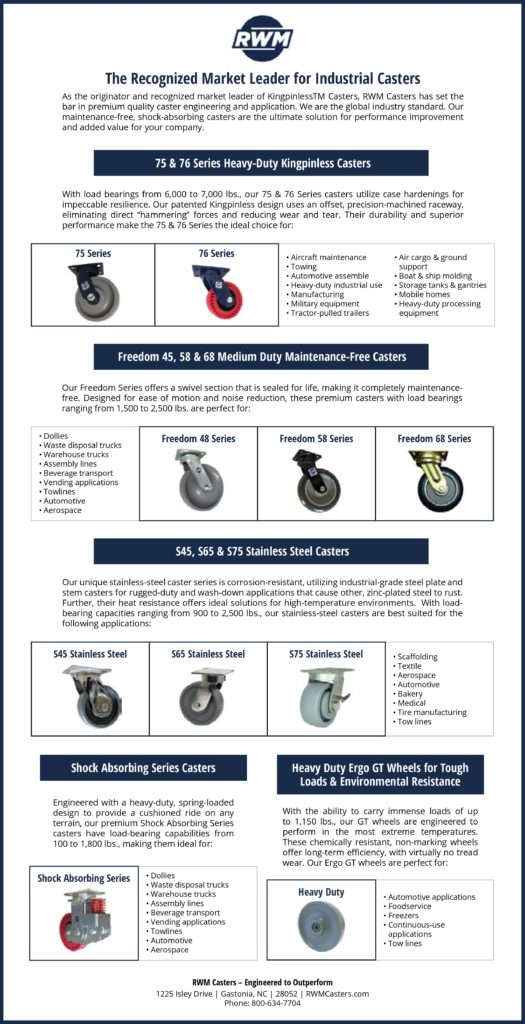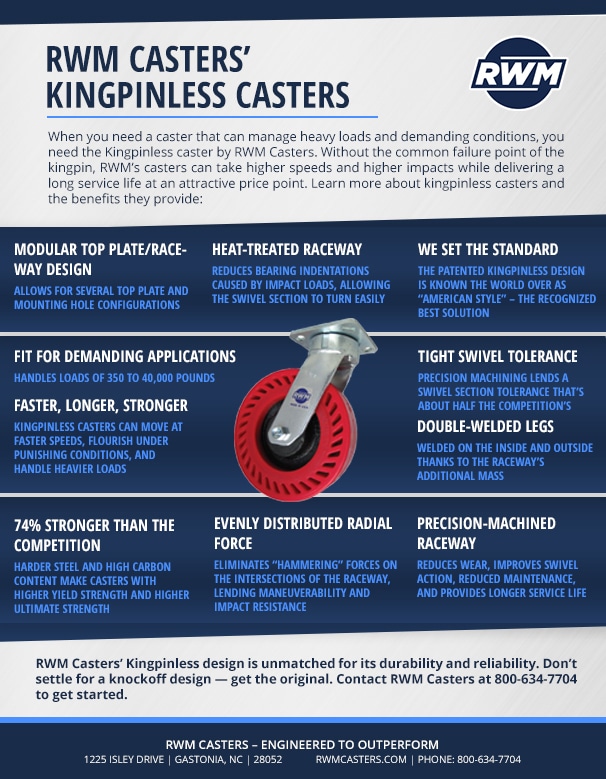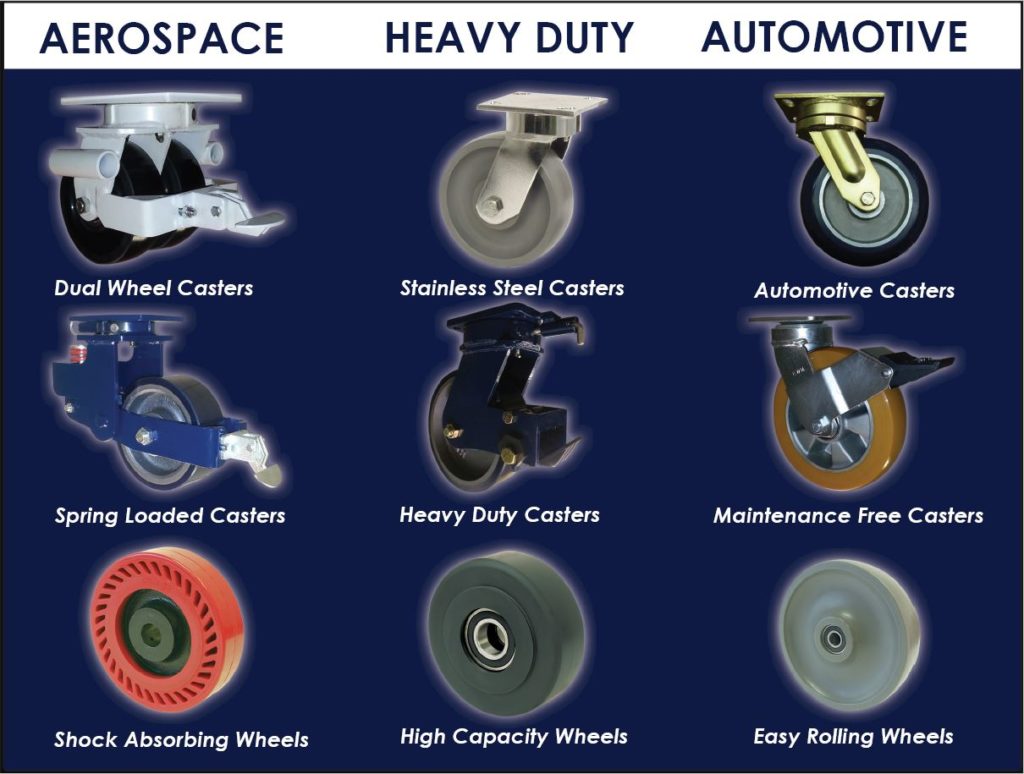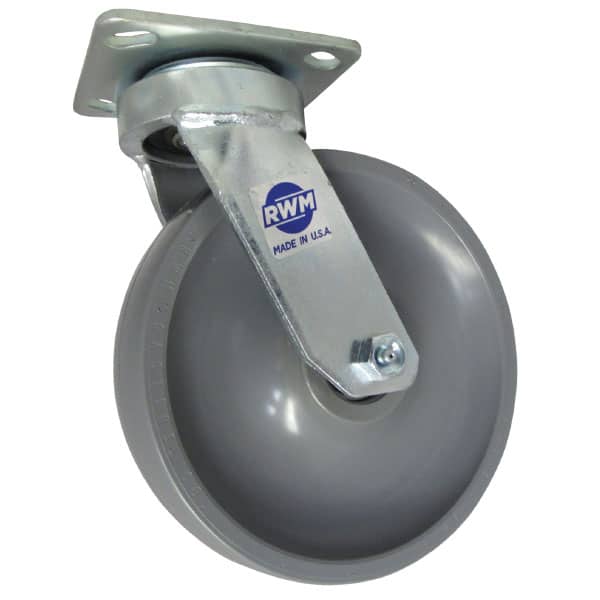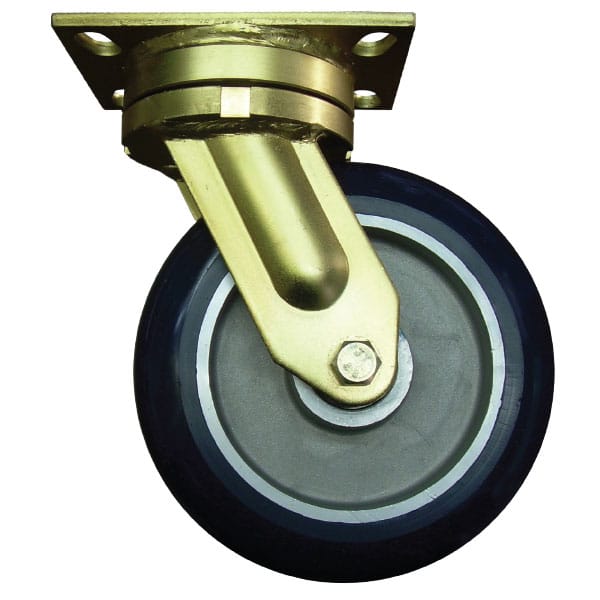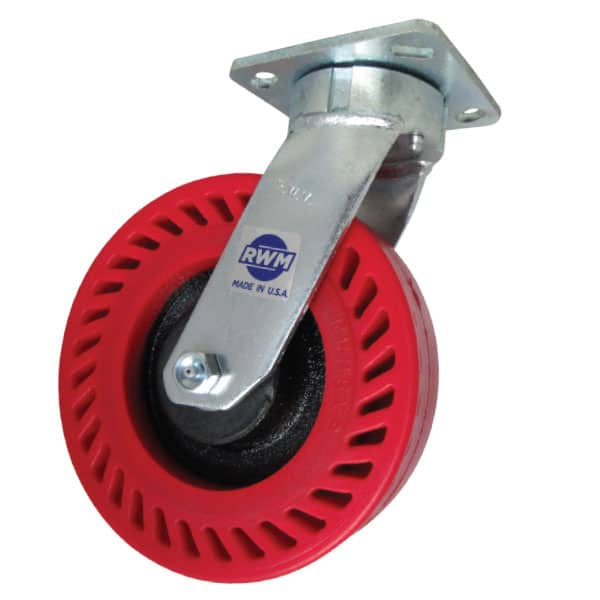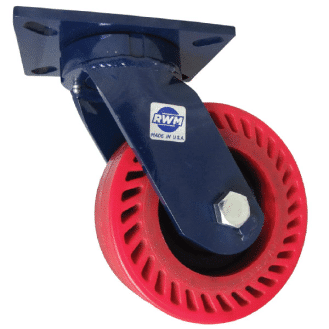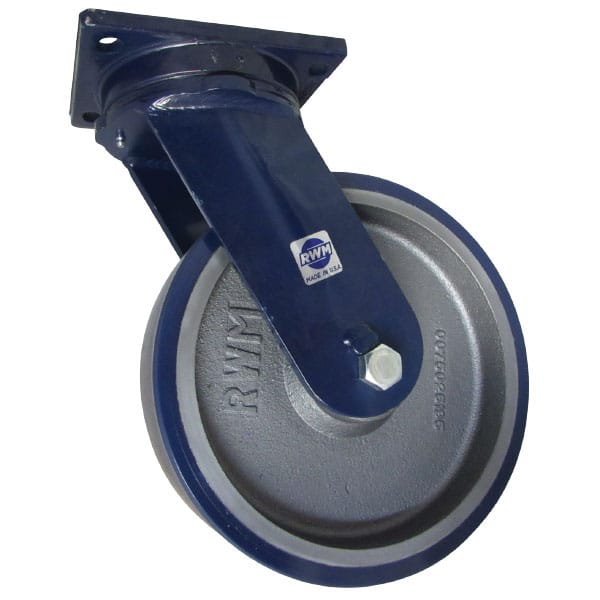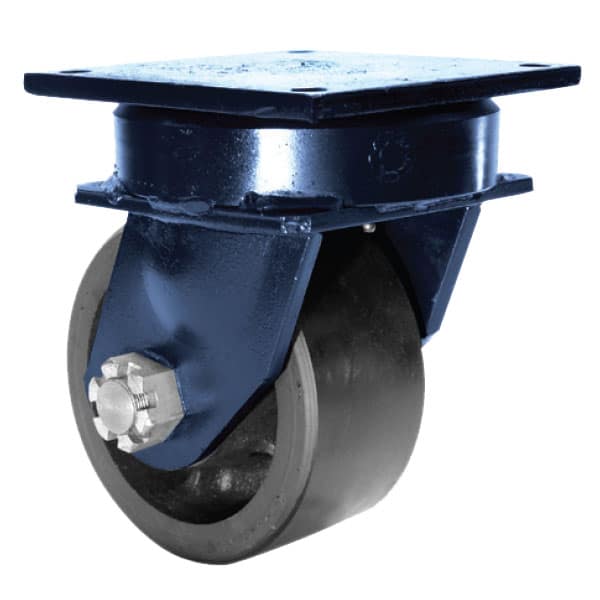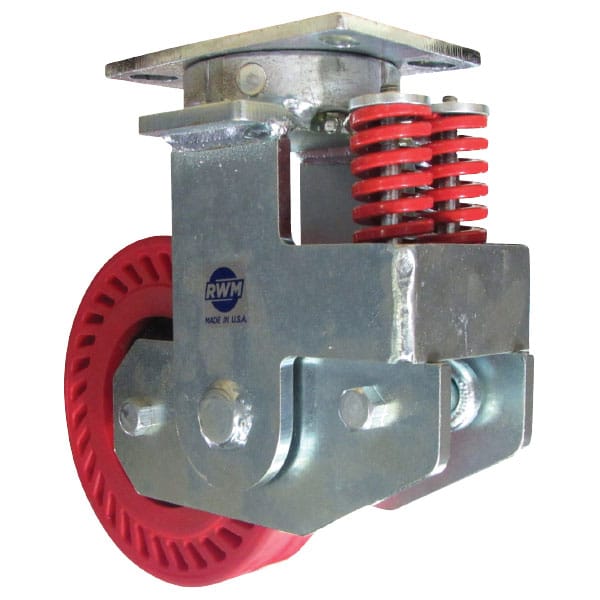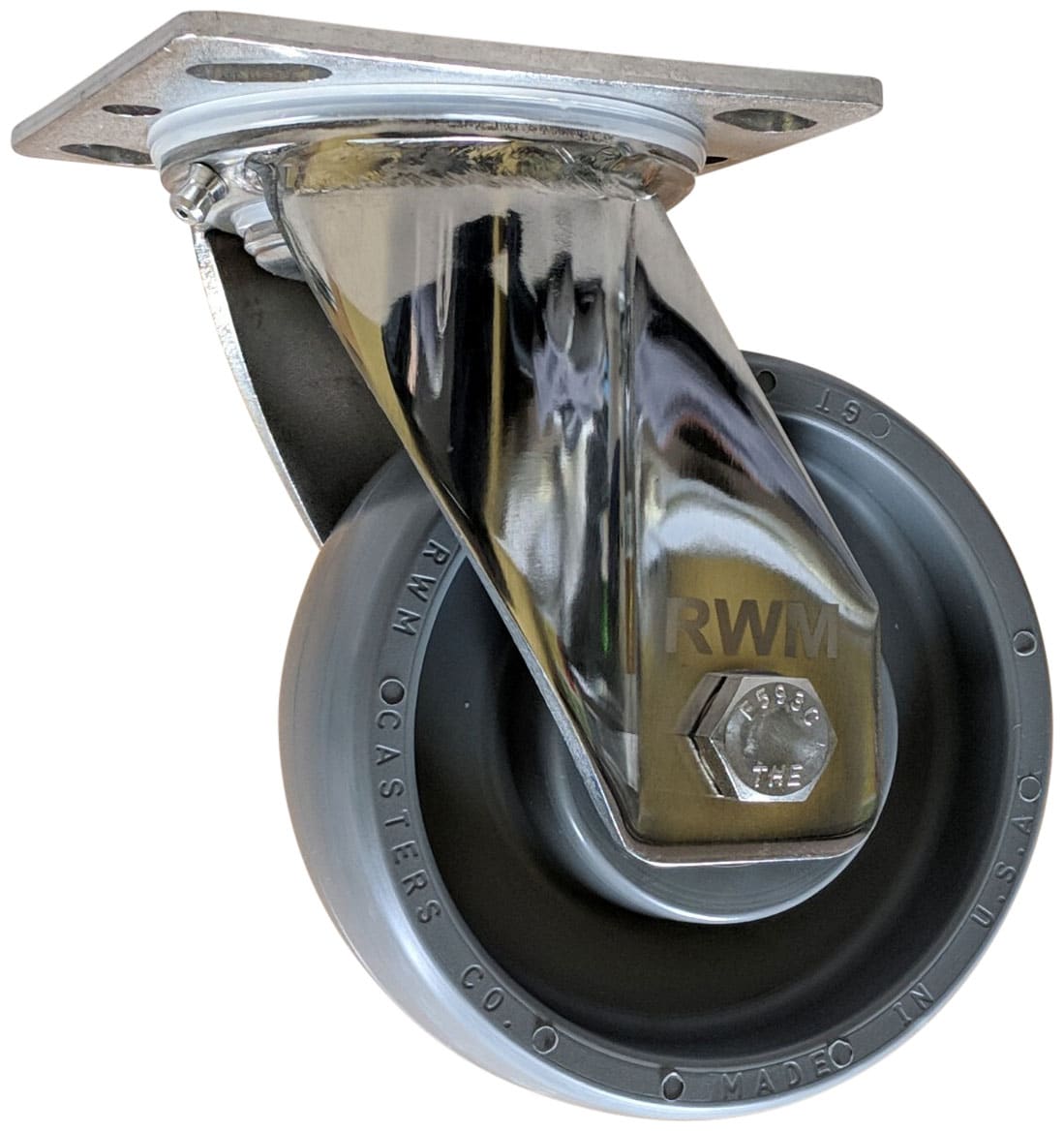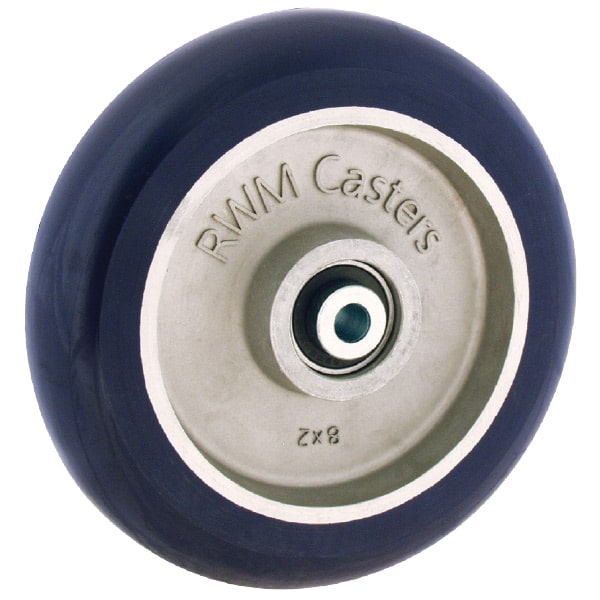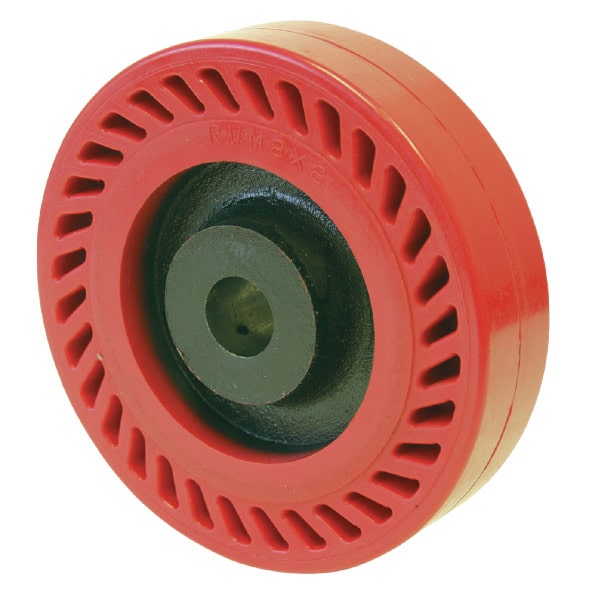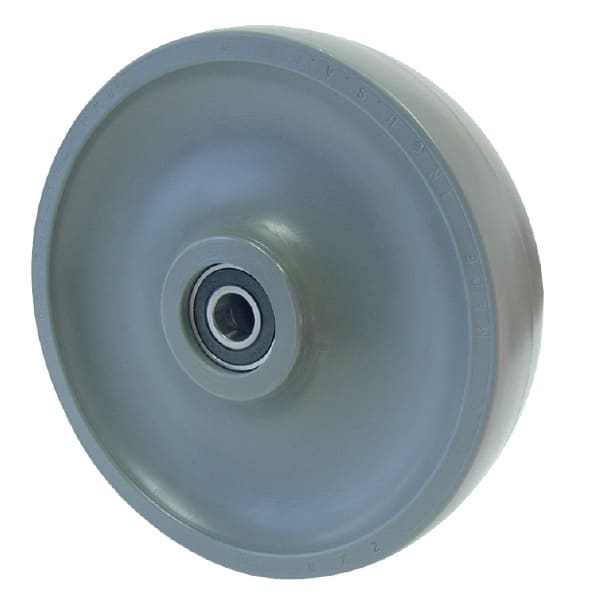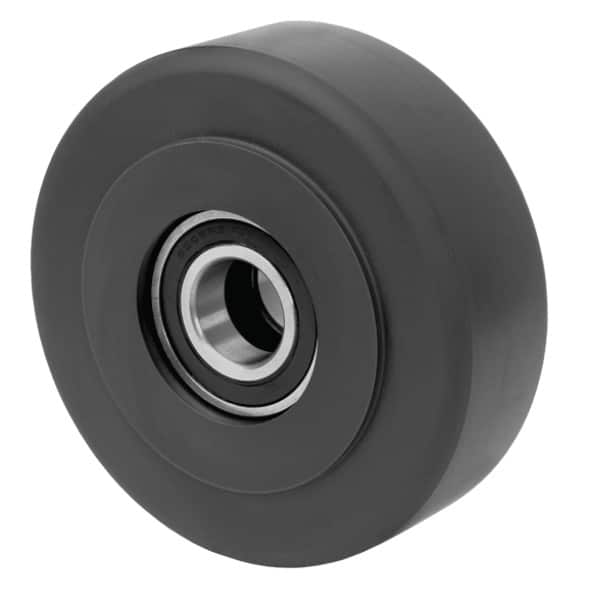The caster industry caters to a multitude of various industrial applications, including many demanding ones such as automotive towlines, heavy duty assembly, tooling equipment, and expensive tool & die carts. For these demanding applications, it is critical that the right caster and wheel product be specified, or time, energy, and money are wasted. A key aspect of selecting the right caster resides in what is known as the swivel lead. The swivel lead of a caster is the offset distance between the vertical centerline of the caster’s raceway and the center of the axle hole on the leg. This dimension is crucial in determining how a caster will perform.
Swivel leads are carefully determined for each caster model depending on the applications they have been designed for. Here is a breakdown of the pros and cons of each and things that should be considered in choosing your type of swivel lead.
- High Speed Applications: Swivel leads for high speed applications are often longer than those of low speed applications. This is to improve how well the caster tracks and eliminate the possibility of swivel chatter. Swivel chatter occurs when casters of a specific lead reach a certain speed which resonates with the construction of the caster. This causes the caster to swivel back and forth frantically, creating excessive vibration and noise. You may be reminded of a noisy shopping cart caster. Swivel chatter is the leading cause of noise in many towline applications and can also lead to safety issues because the casters do not track properly. Not to mention, if chatter becomes too excessive, the caster’s service life can be shortened, costing customers more in maintenance and repairs. It may also make the carts harder to pull at speed, using up more resources. Having a longer lead means higher speeds are required before this occurs. Also, keep in mind that increasing the swivel lead in a towline or high speed application will also increase the turning radius of the cart. Hence, an adequate blend is necessary when utilizing this method in tight spaces to ensure maneuverability.
- High Load Applications: Increasing the swivel lead of a caster has a negative impact on the amount the product is capable of handling. When a lead is increased, the work or movement (force x distance) is increased, causing the raceway to experience more demanding forces than seen on shorter lead casters. High load applications will either need large, heavy duty raceways or shorter leads to offset this occurrence. It is extremely important to ensure that the raceway of the caster is adequately designed to handle the increased moment load before increasing the lead, especially in power drawn applications. Another aspect to keep in mind on long lead casters is leg thickness. When increasing the lead, the forces exerted on the legs are also increased. Towline casters will often require thicker legs or more aggressive forming than standard duty casters.
- Ergonomics: One of the most important aspects when selecting a caster and lead are the ergonomic characteristics presented. Long leads move the wheel farther from the raceway. This makes swiveling the caster easier because less force is required to swivel the caster. For automotive applications where low effort push/pull numbers are required, a longer lead can couple with superior wheel materials to aid in the swivel ability and tracking of the products selected. It is important to note however, that a sweet spot must be maintained for ergonomics. As the lead is increased beyond the optimal amount, swiveling characteristics will actually become more troublesome to handle. This is a case where too little or too much can have equal and opposite negative effects with the correct solution residing in the middle range.
- Tight Spaces: Longer swivel leads increase the swivel radius of a caster. Swivel radius is the distance between the centerline of the swivel raceway of a caster and the farthest point of the wheel, brake, or toe guard away from this axis. This means that when swiveling in a 360-degree circle, the caster with the longer lead will take up more space than one with a shorter lead. As mentioned before, increasing the lead in power drawn and towline application will also increase the turning radius of the carts in use, which may prove to be less viable in tight situations.
- Result: The swivel lead of a caster is vital to the success of a caster in a given application. Special care must be taken to ensure the proper caster is mated to each situation. Truly a science, there are always pros and cons involved. A zero-lead caster will handle heavier loads, maneuver in the tightest areas and take up the least space while a long lead caster will travel at great speed, reduce the potential for noise, and be easier to move.
The right answer for your application is most likely somewhere in the middle! Let our knowledgeable Sales & Engineering staff help point you in the right direction and get things rolling today!

